Health
Rising to the Top: Carol Nabbanja’s Journey to Becoming the Best Graduating Student from MakSPH
Published
3 years agoon
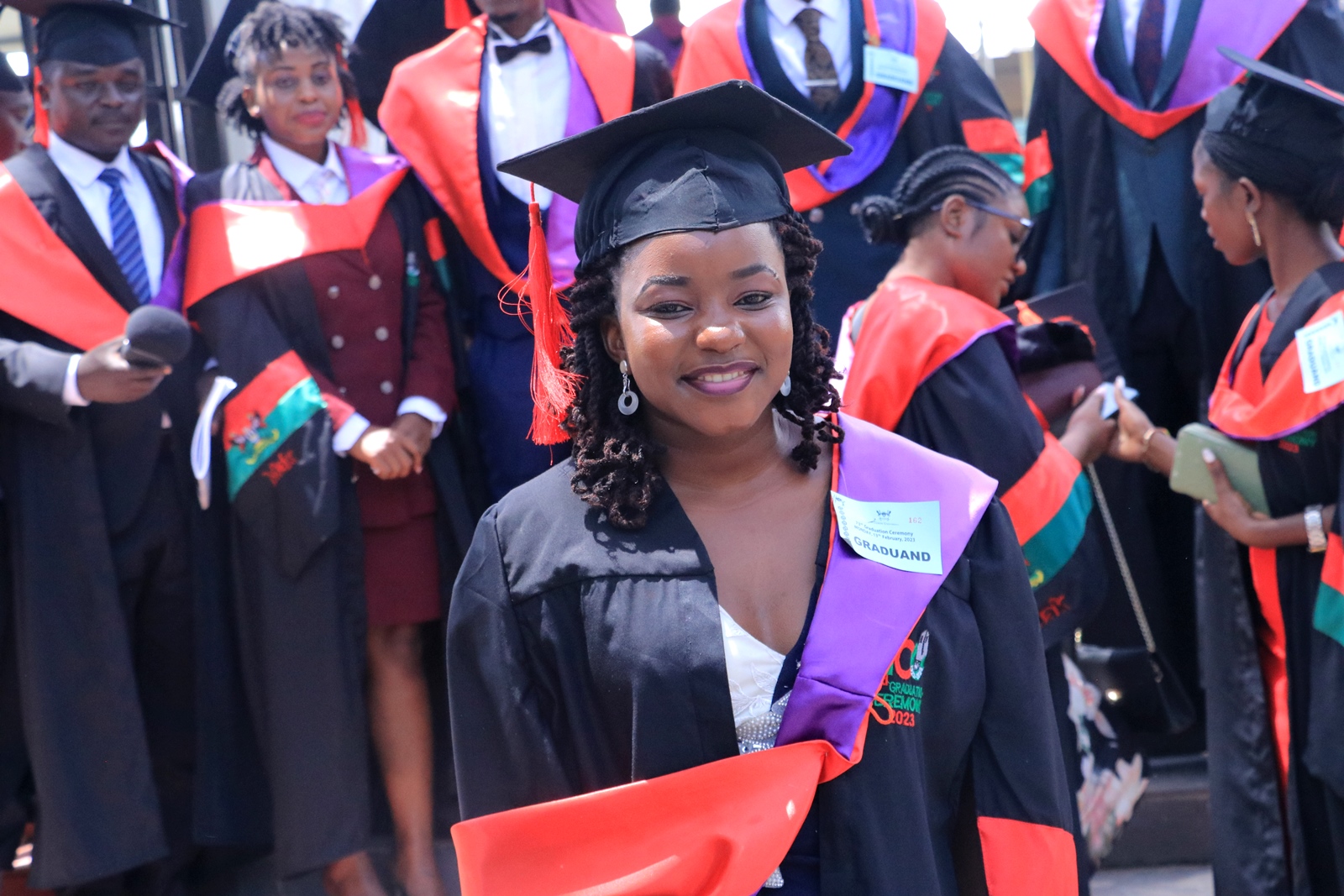
Carol Esther Nabbanja, 22, is set to graduate with First Class Honours in Bachelor of Environmental Health Science (BEHS) from the Makerere School of Public Health as the best-graduating student in the school this year. She graduates in Makerere University‘s 73rd Graduation ceremony today.
With a CGPA of 4.61, she has emerged as the best-graduating student in the MakSPH this year. She graduates alongside her other 43 classmates who made it to the graduation list this year.
Born in Kitemu village, Nsangi Parish, Wakiso District, to Samuel Mawejje, and Alice Naggawa, Nabbanja is the third born of four siblings and first to come to Makerere University, the very first to be on a government scholarship, and the very first to go through Kings College Budo.
Right from her childhood, Nabbanja has always been passionate about health and clean environments, which started from her early years as a head monitor at a government-aided St. Charles Primary School, where she did her nursery to primary five and the sanitation prefect at Clevers Origin Junior School.
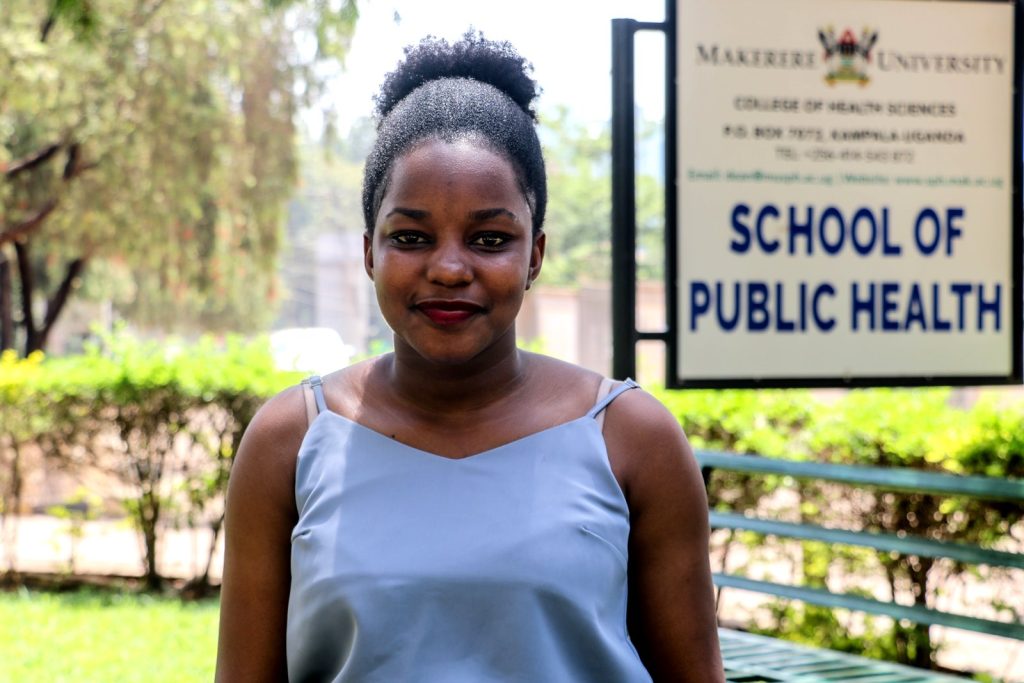
While at St. Charles, Naggawa, Nabbanja’s mother was not convinced that she would make a foundation for a great future. She wanted better for her daughter. Nestled in the bustling streets of Kitintale, lies Clevers Origin Junior School, a beacon of hope for many students in the area. For Naggawa, her daughter’s joining the school would mark the beginning of a new chapter in her life.
She approached the owner of the school, Christopher Mugwanya, who happened to be her brother. Despite being a private school, Mugwanya, a kind-hearted and supportive uncle, offered the Nabbanja a half-bursary based on academic merit and family relationship. “I was overjoyed and couldn’t wait to start his new journey at Clevers Origin,” says Nabbanja.
Settling into her new school, Nabbanja encountered some challenges in mathematics, but her uncle was there to help. “I had some challenges in math, but he ably supported me, he gave me food, visited me when my mother couldn’t make it, and sometimes I would stay at his place over the holidays. He was really supportive. I was able to overcome my difficulties in math and excel in my studies. In fact, my grades improved and I found a newfound passion for learning. I am grateful for the support from my uncle and I feel proud of my academic achievements so far.”
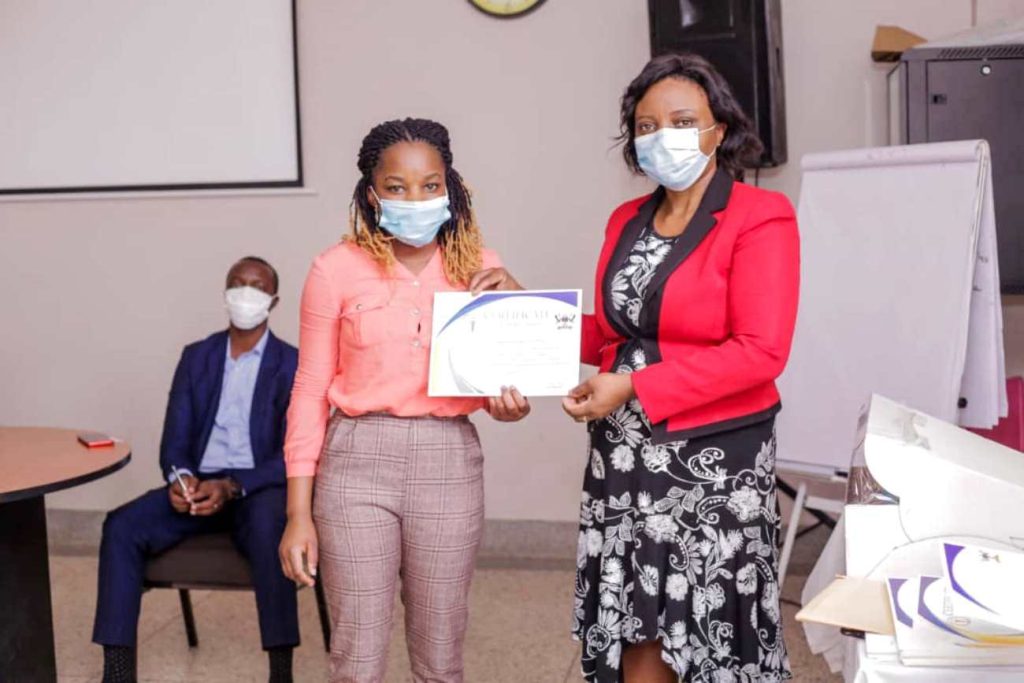
Because of her unwavering determination and hard work, the School was convinced that she would sit her Primary Leaving Examinations (PLE) in Primary Six.
“I did PLE in P.6. The centre I registered at was in Nateete and I was the only first grade there but I didn’t want those results. I decided to wait for my actual time, and when it came, I excelled. I got aggregate 5,” says Nabbanja.
She was the best-performing female academician in her cohort. This was a significant achievement, as her cohort had the best grades since the school was founded. “I was also awarded the best female academician during my time at the school. I, in fact still have the certificate. I have also always been pertinent about health, and so I took up positions like the Sanitation Prefect,” says Nabbanja.
Nabbanja also had a passion for cleanliness and health. As the Sanitation Prefect, she made sure that the school environment was clean and hygienic at all times, something that was important to her from a young age. “I always loved a clean environment and to have everything in its place, so my interest developed that early.”
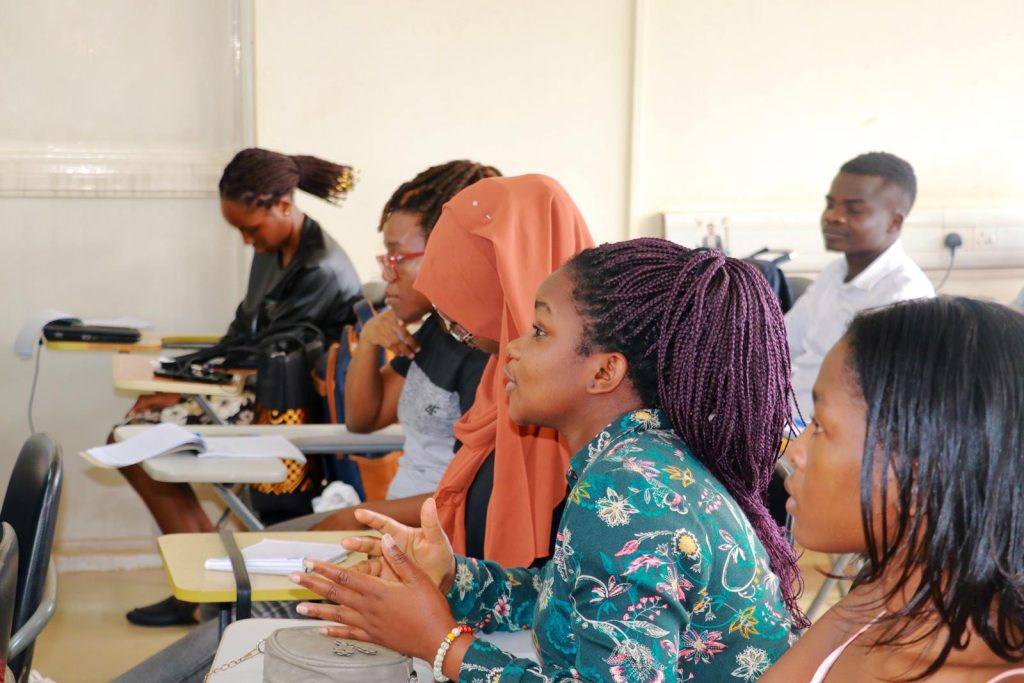
Joining Kings College Budo
Given her outstanding performance, Nabbanja was offered several scholarships to join Secondary School. “I was the very first from that Clevers Origin Junior School to ever go to Kings College Budo—we were two students that performed well, a boy who got 4 and me who got 5 and joined Budo on merit. My parents were offered other offers of schools giving me scholarships but Budo was exceptional. We had to make a decision that would set for me a good standard.”
Her journey to Makerere School of Public Health was paved at Budo. She was initially worried about School fees and how her father, a taxi driver would raise money to support her education.
“On joining my S.1, my parents were worried about the high fees, and the fact that I had studied on bursaries up to this point, they were not financially ready. We were paying about Shs1.4M. My mother talked to the Deputy Head Teacher, Rebecca Kiwanuka, who told her to let me join and that things would work out in the long run. Fortunately, my parents paid fees for S. 1,” says Nabbanja.
Unsure of how the second term would go, by sheer luck, Ligomarc Advocates, a financial and corporate law firm located at Social Security House in Kampala was celebrating 10 years and the partners decided to go back to their high schools and support students who were having financial issues
“By God’s grace, after the meeting between the School administration and the law firm, Mrs. Kiwanuka, our deputy head teacher informed me that I had gotten a sponsor,” Nabbanja says.
Ligomarc Advocates did not only sponsor her education but also provided opportunities for her to work with them during school breaks.
“Ligomarc took me for the 6 years I was at Budo. They were not just sponsors but also supporters, they supported me financially, came for V.Ds [Visitation Days], and also gave me an opportunity to work with them as an office attendant during my vacations. I also assisted the administration, delivering letters here and there. They supported me beyond just academics,” she says.
Budo was a turning point in Nabbanja’s life. It exposed her to new experiences and taught her valuable life lessons that have stayed with her to this day. She thrived in her studies, maintaining an average of 94 and earning 10 out of 8 aggregates in S.4 and 16 out of 20 in S.6.
Nabbanja never lost sight of her goals and was motivated by quotes from her late headmaster, Mr. Patrick Bakamale, such as “In this era of information and technology, we need to have the power of selection,” and “Focus on roots not fruits.”
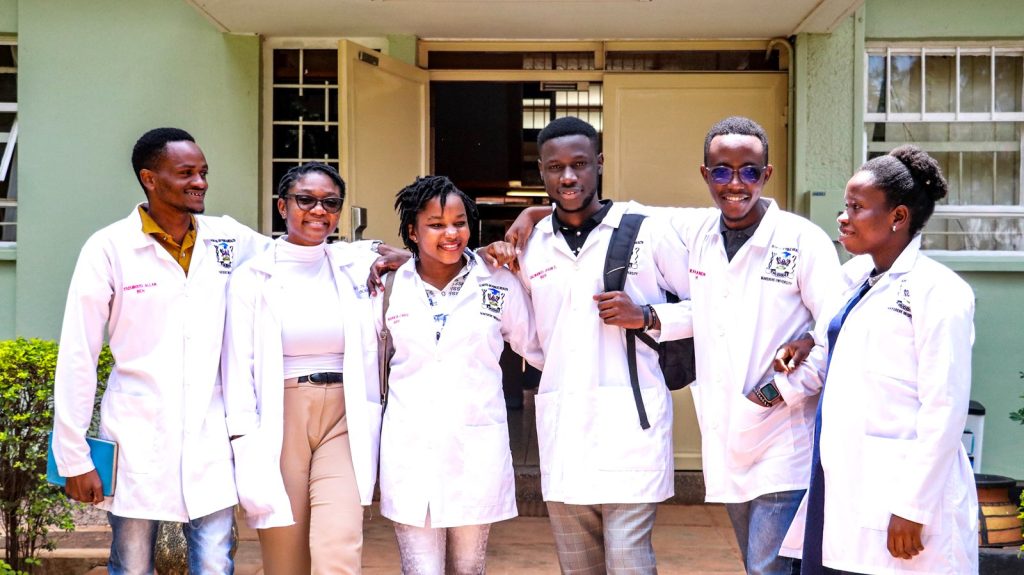
Shaping her dream
Growing up, Nabbanja had always been fascinated by journalists, with the thrill of being on TV. “I used to hear that they earn 1 million, so that excited me.” However, it was her frequent trips to the dentist that truly sparked her interest in the field of dentistry. As she watched the dentists work their magic, Nabbanja was drawn to their ability to improve people’s dental health and change their lives for the better. “As a child I had so many dental issues, even at home. When I would visit the dentist, I would see a guy in a coat, doing some good work so I realized he doesn’t even work the night shift and it made me want to become a dentist,” she added.
Despite being tempted to pursue a career in law due to the time she spent at Ligomarc Advocates, Nabbanja held firm to her dream of attending medical school and becoming a dentist. She was determined to help her siblings, and others, achieve the confident smile they deserved.
However, her dream course, Dental Surgery, eluded her by just one point. Instead, she was given the opportunity to study Environmental Health Science, a subject that would soon become her passion.
“I didn’t know much about MakSPH, actually my first few days were not that pleasant. I kept thinking about my friends who were doing my dream course even though they were on private not government sponsorship, but my mother didn’t have the money,” she says.
Ruth Mubeezi Neebye, an Assistant Lecturer in the Department of Disease Control and Environmental Health would later become Nabbanja’s mentor. According to Nabbanja, she has equally been inspired by Dr. Esther Buregyeya and Dr. David Musoke.
Throughout her time at MakSPH, Nabbanja has consistently stood out as a top performer, earning high grades and impressing her professors and peers alike. Despite her impressive academic record, she remains humble and grateful for the support she has received from her family, friends, and sponsors along the way.
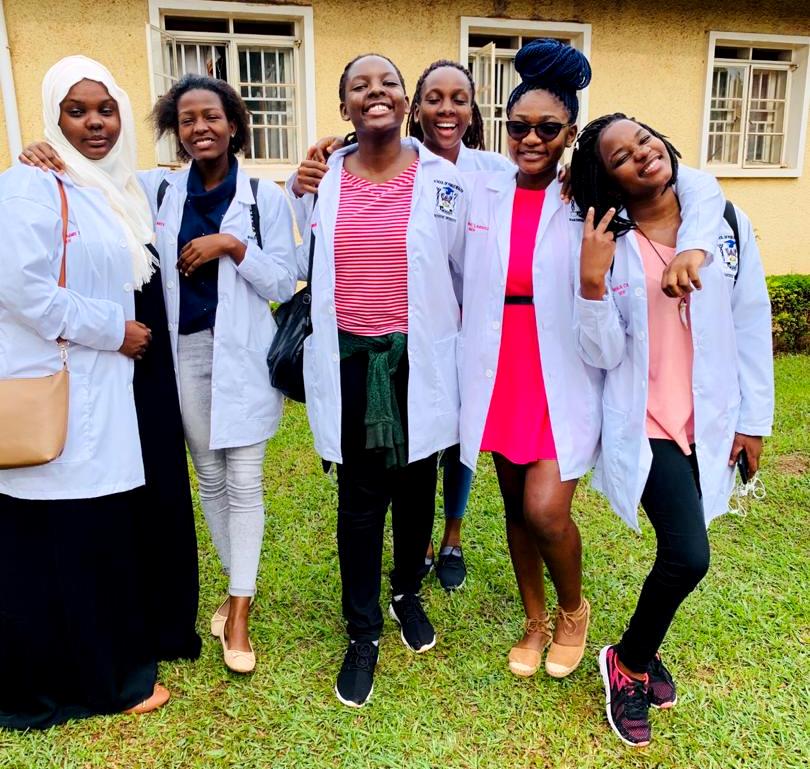
Nabbanja, a sports personality
As a student at Makerere School of Public Health, Nabbanja was a standout in both academics and sports. She fell in love with swimming. As a member of the Makerere University swim team, Nabbanja excelled in competitions and brought home medals for the university. She found solace in the sport, using it as a way to relax after long days of lectures and studying. Swimming also provided her with the opportunity to travel and make new friends, as well as to work on her physical and mental health.
“Swimming gives you a lot of opportunities, so that inspired me as well. Very many people travel on University tickets, and since I love outdoor life and traveling, I looked at this as an opportunity. Swimming teaches you to read, and do other things like jogging before joining the pool. It is also an individual sport because when you don’t swim for a month, your time is cut,” says Nabbanja.
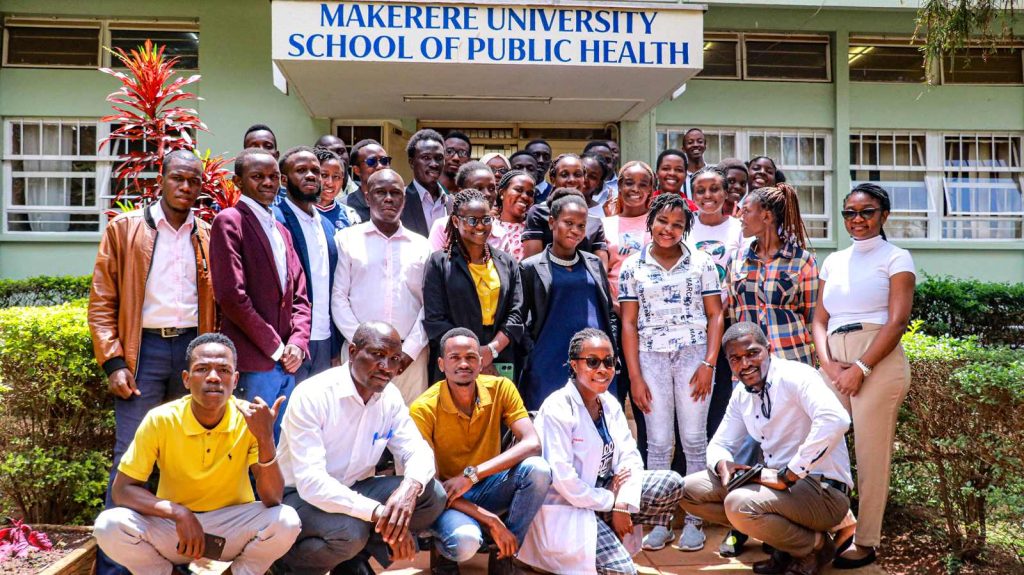
Journeying to First Class
For some students, University education is just a three-four-year period of attending lectures and socializing with peers. But for others, it’s a stepping stone to a brighter future. And that’s exactly what happened to Nabbanja, the best-graduating student from Makerere School of Public Health (MakSPH). She has not only excelled in academics but was also a talented swimmer who represented the University in various competitions.
Nabbanja’s success journey started with a clear plan and a strong determination to succeed. She believed that becoming a first-class student was not only about attending lectures but also about being self-aware and taking control of one’s own learning process. Nabbanja made a habit of reflecting on what was learned each day and relating it to real-life situations.
When asked about her experience at MakSPH, Nabbanja had nothing but praise for the staff and their professionalism. She says she never encountered any corrupt practices and appreciated the well-defined structure that made it easy to know where to go for assistance. Marks were received on time and she never felt lost or unsure of what to do next.
“The staff is also supportive, right from the reception, everyone is helpful—when inquiring about offices, or office protocol. We also get our marks on time, usually a week into the new semester. The service delivery is good and we are not tossed around.”
Nabbanja’s journey serves as a testament to the power of hard work, determination, and support from family and sponsors.
By Davidson Ndyabahika and Samantha Agasha
You may like
-


Makerere University and Tsinghua University Launch Landmark China–Uganda Joint Laboratory on Natural Disaster Monitoring and Early Warning
-
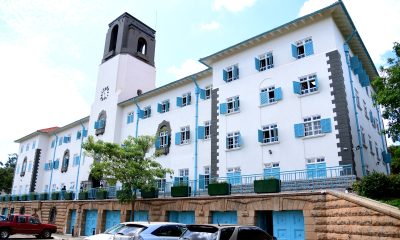

US$ 162m KEXIM Loan Approval Timely for Makerere University
-


Makerere University Explores Strategic Partnership with Tsinghua University in Safety Science, Disaster Resilience and Public Health
-


Three Years of Impact: Makerere University Health User Committee Presents Status Report
-


MakCHS Centennial Exhibition Opens
-


Inside Uganda’s Silent AMR Crisis: Counterfeit Drugs, Antibiotic Overuse, and What Wakiso’s Evidence Reveals
Health
Makerere University and Tsinghua University Launch Landmark China–Uganda Joint Laboratory on Natural Disaster Monitoring and Early Warning
Published
1 week agoon
December 19, 2025
Makerere University has taken a decisive step in strengthening Uganda’s and Africa’s capacity for public safety, disaster preparedness, and climate resilience with the official launch of the China–Uganda Belt and Road Joint Laboratory on Natural Disaster Monitoring and Early Warning, a flagship collaboration with Tsinghua University of China.
Launched during the Makerere University–Tsinghua University Symposium on Public Safety and Natural Disaster Management, the Joint Laboratory positions Makerere as a continental hub for cutting-edge research, innovation, and policy-relevant solutions in disaster risk reduction, early warning systems, and emergency response. The Laboratory will be hosted by Makerere University and is the only facility of its kind in Africa under this cooperation framework, underscoring its regional and global significance.
A Strategic Partnership Rooted in Research, Policy, and Practice
In his opening remarks, Prof. Barnabas Nawangwe, Vice-Chancellor of Makerere University and Ugandan Co-Director of the Joint Laboratory, traced the origins of the partnership to 2018, when a Makerere delegation visited Tsinghua University and the Hefei Institute for Public Safety Research. He recalled being deeply impressed by China’s advanced capacity in public safety research, disaster monitoring, and emergency management capabilities that directly respond to Uganda’s growing exposure to floods, landslides, epidemics, and other hazards.
The Vice-Chancellor noted that the successful establishment of the Joint Laboratory followed a competitive grant process under China’s Belt and Road Initiative, supported by the Government of Uganda and regional partners, including Nigeria and Côte d’Ivoire. He emphasized that the Laboratory aligns squarely with Makerere’s strategic ambition to become a research-led and research-intensive university, while also advancing its internationalisation agenda.

“This Laboratory will significantly enhance Makerere University’s ability to generate evidence-based research that directly informs government policy and public safety interventions. It will serve not only Uganda, but Africa at large,” Prof. Nawangwe said.
He further underscored the Laboratory’s national importance, noting that similar facilities in China are regarded as national-level laboratories, entrusted with supporting government decision-making and national resilience. Relevant Ugandan institutions, including the Office of the Prime Minister (OPM), UPDF, Uganda Police, Ministry of Health, and humanitarian actors, are expected to actively participate in the Laboratory’s work.
Tsinghua University: Advancing Science Diplomacy and South–South Cooperation
Speaking on behalf of Tsinghua University, Prof. Yuan Hongyong, Dean of the Hefei Institute for Public Safety Research and Chinese Co-Director of the Joint Laboratory, described the initiative as both a scientific milestone and a powerful demonstration of South–South cooperation.
He emphasized that natural disasters transcend national borders and demand collective, science-driven responses. By combining Tsinghua’s technological expertise, including satellite monitoring, AI-driven analytics, and integrated early warning systems, with Makerere’s deep regional knowledge and policy engagement, the Joint Laboratory provides a robust platform for innovation, applied research, and practical solutions tailored to African contexts.

The Laboratory will function not only as a research centre, but also as an operational platform for natural hazard monitoring, early warning, risk assessment, and capacity building, supporting Uganda and the wider African region in building more resilient communities.
Government of Uganda: Research as a Pillar of National Resilience
Representing the Office of the Prime Minister, Mr Frederick Edward Walugemba, reaffirmed the government’s strong support for the Joint Laboratory, recognizing research as a cornerstone of effective public safety and disaster management. The OPM highlighted its constitutional mandate to coordinate disaster preparedness and response through institutions such as the National Emergency Coordination and Operations Centre (NECOC).
He mentioned that the Office of the Prime Minister is committed to working closely with Makerere University and its partners, underscoring the importance of multi-agency collaboration, robust data systems, and timely policy advisories to address the complex, multidimensional nature of public safety challenges.
China–Uganda Relations and the Role of Science Diplomacy
Mr. WANG Jianxun, Commercial Counsellor of the Embassy of the People’s Republic of China in Uganda, lauded the Joint Laboratory as a concrete outcome of the growing China–Uganda Comprehensive Strategic Partnership. He emphasized that the collaboration reflects China’s commitment to knowledge sharing, technology transfer, and people-centred development, particularly in areas such as climate adaptation, disaster risk reduction, and sustainable development.
He also highlighted the Belt and Road Initiative as a framework that extends beyond infrastructure to include scientific cooperation, academic exchange, and innovation-driven development, with the Joint Laboratory standing as a model of how universities can advance diplomacy through science.
Makerere’s Multidisciplinary Strength at the Core
In his concluding remarks, Prof. Nawangwe reaffirmed Makerere University’s readiness to operationalize the Laboratory through a multidisciplinary research team spanning public health, geography, engineering, computing, artificial intelligence, social sciences, and the built environment.
He stressed that effective disaster management must integrate technology, human behaviour, governance, and community engagement, noting the importance of sociological insights in addressing risk perception and public compliance during disasters. Makerere will also engage emerging universities and regional partners to ensure the Laboratory’s benefits are widely shared.

The Vice-Chancellor also commissioned an interim, multidisciplinary coordination committee to operationalise the Joint Laboratory, drawing expertise from health, climate science, engineering, artificial intelligence, social sciences, and government agencies.
Hon. John Chrysostom Muyingo Officially Launches the Laboratory
The Joint Laboratory was officially launched by the Honourable John Chrysostom Muyingo, Minister of State for Higher Education, who applauded Makerere University and Tsinghua University for securing the prestigious grant and advancing Uganda’s science and research agenda.

Hon. Muyingo reaffirmed the Government’s commitment to supporting research that informs national development, public safety, and disaster preparedness. He urged Ugandan researchers to fully leverage the partnership to learn from China’s experience in transforming research into actionable solutions for society.
“This Laboratory is a clear demonstration of how strategic international partnerships can strengthen national capacity, inform policy, and protect lives,” the Minister said, as he formally declared the symposium and laboratory launch open.
Positioning Makerere as a Regional Centre of Excellence
Makerere University already plays a critical role in public safety, disaster preparedness, and early warning through a range of research, training, and operational partnerships. Through the School of Public Health (MakSPH) and the Infectious Diseases Institute (IDI), the University has led national and regional initiatives in epidemic preparedness, emergency response, and early warning, including Field Epidemiology Training, risk prediction modelling, and multi-hazard risk assessments that inform district and national preparedness planning. A national assessment of 716 health facilities conducted by MakSPH revealed widespread exposure to climate-related hazards and systemic preparedness gaps, directly informing the Ministry of Health’s Climate and Health National Adaptation Plan (H-NAP 2025–2030)
Makerere has also been at the forefront of disaster risk reduction innovation and community resilience through the Resilient Africa Network (RAN), which has supported scalable, evidence-based solutions such as EpiTent, a rapidly deployable emergency health facility; RootIO, a community-based radio communication platform used for risk communication and early warning; and RIAP Horn of Africa, which advances climate-resilient water harvesting technologies for drought-prone pastoralist communities.

Earlier, the University led the USAID-funded PeriPeri U project (2014–2019) and a disaster management collaboration with Tulane University, strengthening applied research, training, and early warning systems across Africa, efforts that laid the foundation for RAN and Makerere’s current disaster resilience agenda.
In collaboration with government and international partners, Makerere has supported the strengthening of Emergency Operations Centres, including the development of Regional Emergency Operations Centre (REOC) dashboards to improve real-time coordination and situational awareness. IDI has further contributed to epidemic intelligence and early warning, supporting districts to update WHO STAR-based risk calendars, strengthen sub-national preparedness, and enhance real-time decision-making during outbreaks. Makerere teams have also been deployed regionally to support Marburg and Mpox outbreak responses in Rwanda and the DRC, while advancing outbreak modelling as an early warning tool for high-consequence infectious diseases.
Complementing these efforts, the Department of Geography, Geo-Informatics and Climatic Sciences conducts transdisciplinary research on floods, landslides, droughts, soil erosion, and land-use change, using geospatial analysis, earth observation, modelling, and participatory methods to translate complex data into actionable early warning and risk information for policymakers and communities. These ongoing initiatives collectively demonstrate Makerere University’s established capacity in public safety, disaster preparedness, and early warning, providing a strong operational and scientific foundation for the China–Uganda Belt and Road Joint Laboratory.
With strong backing from the Governments of Uganda and China, as well as leading international partners, the China–Uganda Belt and Road Joint Laboratory on Natural Disaster Monitoring and Early Warning is poised to become a regional centre of excellence for disaster risk reduction research, training, and innovation.
The Laboratory will contribute to improved early warning systems, faster emergency response, stronger policy coordination, and enhanced scientific capacity, cementing Makerere University’s role at the forefront of addressing some of the most pressing public safety challenges facing Uganda, Africa, and the global community.
Caroline Kainomugisha is the Communications Officer, Advancement Office Makerere University.
Health
Makerere University Explores Strategic Partnership with Tsinghua University in Safety Science, Disaster Resilience and Public Health
Published
1 week agoon
December 16, 2025
Makerere University has taken a significant step toward strengthening global research collaboration following a high-level meeting between Vice Chancellor Prof. Barnabas Nawangwe and a delegation from Tsinghua University’s Hefei Institute for Public Safety Research, one of China’s leading centres of excellence in disaster prevention, public safety, and emergency management. The engagement marked a renewed commitment to advancing scientific cooperation between the two institutions, particularly in addressing complex environmental and public health challenges that continue to shape national and global development.
A Partnership Anchored in Shared Challenges and Global Priorities
In his remarks, Prof. Nawangwe emphasized that the concept of comprehensive public safety, spanning natural disasters, epidemics, infrastructure failures, and social risks, is increasingly relevant to all colleges and disciplines at Makerere. Uganda’s experience with epidemics such as Ebola, cholera, and COVID-19; frequent landslides in mountainous regions; flooding events; and rising traffic-related incidents place the University in a unique position to contribute applied research, community-based insights, and local knowledge to a global scientific dialogue.
He noted that the Tsinghua presentation revealed new areas of alignment, particularly in epidemic modelling, early-warning systems, and integrated emergency management, areas where Makerere’s public health scientists, medical researchers, and social scientists have extensive expertise.
“This collaboration offers meaningful opportunities for nearly every college at Makerere,” he noted. “Public safety touches the environment, public health, engineering, social sciences, ICT, humanities, and urban planning. The challenges we face as a country make this partnership both timely and essential.” Prof. Barnabas Nawangwe noted.
Tsinghua University: A Global Leader in Comprehensive Public Safety.
The delegation from Tsinghua University outlined China’s national investment in Public safety over the past two decades, an effort driven by the recognition that life and security are the foundation of sustainable development. Tsinghua’s Hefei Institute for Public Safety Research has developed nationally recognised research platforms and large-scale simulation facilities dedicated to Natural disaster modelling (earthquakes, landslides, floods, typhoons, Infrastructure and urban systems safety, Public health emergencies and epidemic preparedness, Early-warning, monitoring, and emergency communication, Traffic and transportation safety, Post-disaster reconstruction and resilience planning.

Their systems currently support over 100 provincial and municipal emergency management centres in China, underscoring their global leadership in practical, scalable solutions for disaster risk management. The delegation reaffirmed that Uganda’s lived experience with multiple hazards presents opportunities for meaningful knowledge exchange. They expressed particular interest in learning from Makerere’s work on epidemic response, community health systems, and the social dimensions of disaster management.
Emerging Areas of Partnership
The meeting identified several promising pathways for long-term collaboration:
1. Joint Research in Disaster Risk Reduction and Climate-Related Hazards
Both institutions expressed readiness to co-develop research projects on landslides, floods, urban resilience, and multi-hazard modelling, drawing on Tsinghua’s advanced simulation technologies and Makerere’s environmental expertise and geographic field realities.
2. Public Health Emergency Preparedness and Epidemic Response
Makerere’s renowned public health schools and research centres will collaborate with Tsinghua on epidemic prediction, early-warning systems, and integrated preparedness frameworks, leveraging Uganda’s decades of experience managing high-risk disease outbreaks.

3. Infrastructure and Urban Safety, Including Traffic Systems
With Uganda experiencing rapid urbanisation and high rates of motorcycle-related road incidents, Tsinghua shared insights from China’s own transformation, including infrastructure redesign, transport modelling, and public transit innovations. Collaborative work in this area would support city planning and road safety interventions in Kampala and other urban centres.
4. Academic Exchange and Capacity Building
Both sides expressed interest in student exchanges, staff mobility, co-supervision of postgraduate research, and specialised training programmes hosted at Tsinghua’s world-class safety research facilities.
5. Development of a Joint Public Safety Laboratory at Makerere
The institutions are exploring the establishment of a collaborative safety research platform in Uganda. This initiative could serve as a regional hub for innovation in emergency management, environmental safety, and technology-driven risk assessment.
Towards a Long-Term, Impactful Collaboration
The meeting concluded with a shared commitment to develop a structured partnership framework in the coming months, supported by both universities and aligned with Uganda–China cooperation priorities. Both teams acknowledged that the partnership must yield tangible results that enhance community resilience, bolster national preparedness systems, and foster scientific capacity for future generations.
Prof. Nawangwe commended Tsinghua University for its willingness to co-invest in research and capacity building, noting that such collaborations position Makerere not only as a leading research institution in Africa but as an active contributor to global scientific progress.

“This partnership has the potential to transform our understanding of the science of public safety to deliver solutions that safeguard lives.” Prof. Barnabas Nawangwe noted.
“It aligns perfectly with Makerere’s mission to be a research-led, innovation-driven university responding to the world’s most urgent challenges.” He added.
As part of this strategic partnership engagement, Makerere University will, on Wednesday, 17th December, co-host the Makerere University–Tsinghua University Symposium on Public Safety and Natural Disaster Management. The symposium will run from 8:00 AM to 2:00 PM in the University Main Hall, Main Building.
This symposium represents a deepening of collaboration not only between Makerere University and Tsinghua University, but also a broader strategic partnership between Uganda and the People’s Republic of China.
During the event, H.E. Zhang Lizhong, Ambassador of the People’s Republic of China to Uganda, together with the State Minister for Higher Education, Government of Uganda, will officially launch the China–Uganda Belt and Road Joint Laboratory on Natural Disaster Monitoring and Early Warning. The Laboratory will be hosted at Makerere University, positioning the University to play a central role in strengthening Uganda’s and the region’s capacity for natural disaster preparedness, public safety, and emergency management research.
Caroline Kainomugisha is the Communications Officer, Advancement Office, Makerere University.
Health
Three Years of Impact: Makerere University Health User Committee Presents Status Report
Published
2 weeks agoon
December 12, 2025By
Eve Nakyanzi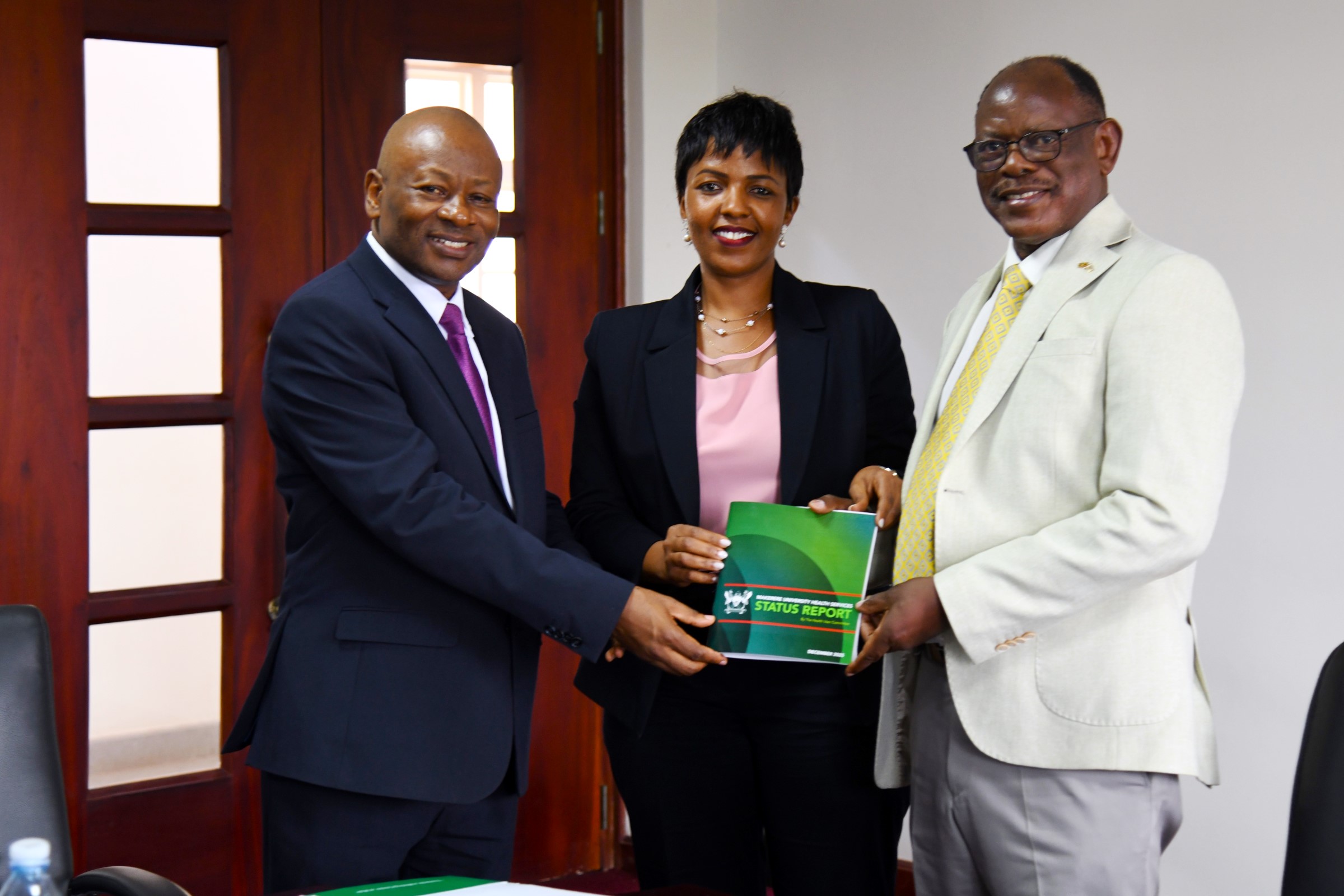
Makerere University on 11th November 2025 marked a significant milestone as the Health User Committee (Mak-HUC)—established by the Vice Chancellor in 2022 as part of his strategic mandate to strengthen and oversee the University’s health service delivery—formally handed over its three-year report. The event highlighted the committee’s achievements in guiding, monitoring, and improving Makerere University Health Services, presenting a record of progress that has reshaped confidence, strengthened systems, and expanded care for staff and students.
A Call for Integrated and Sustainable Health Services
The Vice Chancellor Prof. Barnabas Nawangwe emphasized the need for a more integrated, efficient, and sustainable approach to delivering health services for Makerere University staff and students. He noted that while the University does not receive supplies from the National Medical Stores system, its community remains entitled to quality care, urging renewed consideration of how essential services—such as drug access, surgical limits, and special medical cases—can be better supported. He highlighted the importance of practical costing models, especially for extending care to staff dependents, and called for flexibility in managing exceptional cases like complex surgeries or referrals abroad.
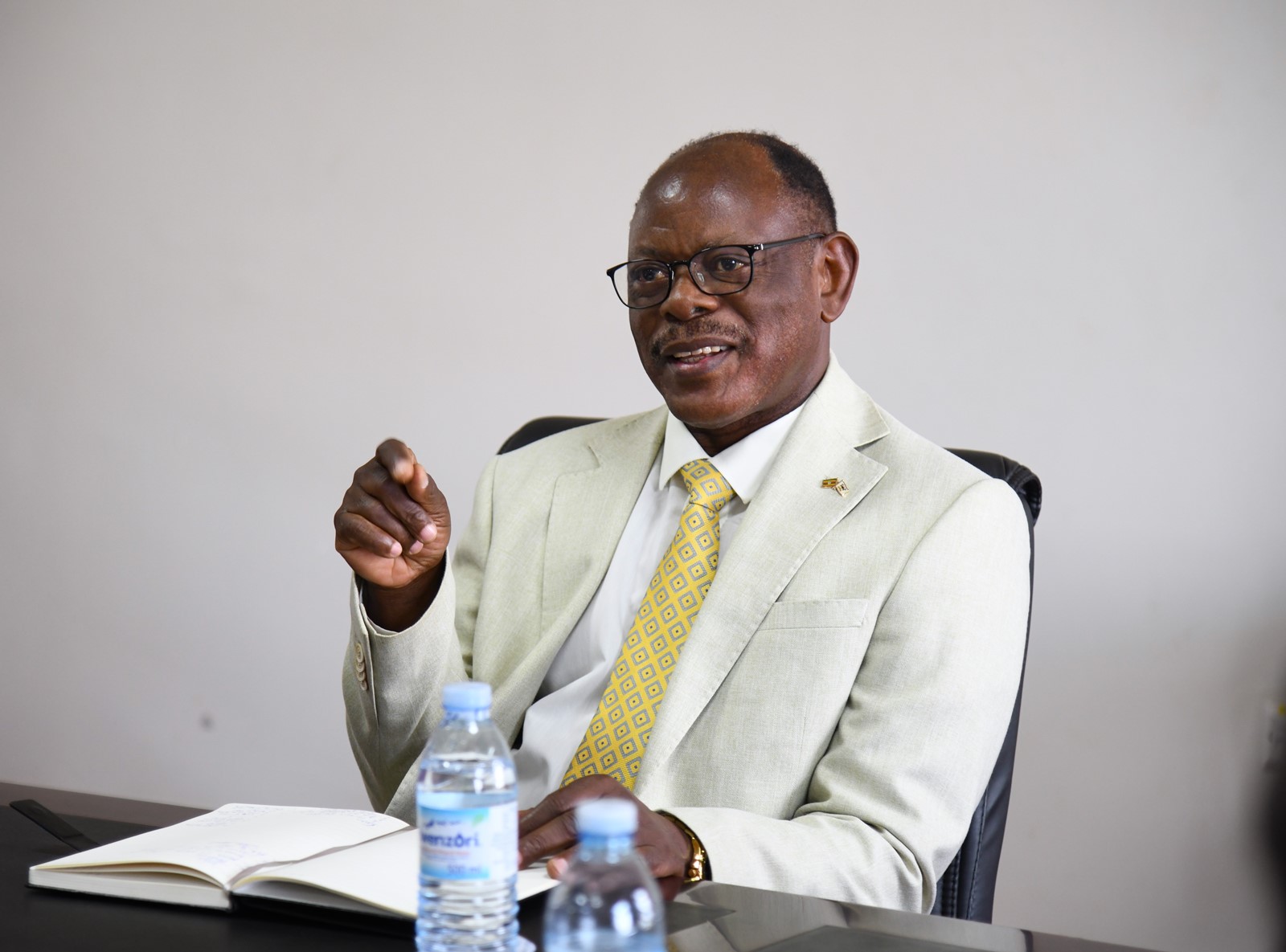
The Vice Chancellor also underscored the urgent need to modernize the University Hospital, proposing that Makerere begin incrementally establishing a teaching hospital using existing facilities and leveraging expertise of highly qualified consultants the College of Health Sciences (CHS). He reiterated that government budget ceilings remain a major constraint, but encouraged the committee to develop a concept that could be presented to Council and later supported through strategic engagement with the Ministry of Finance, Planning and Economic Development. Throughout his remarks, he applauded the Mak-HUC for its work and reaffirmed that even with the creation of a professional hospital board, the committee must remain central in representing service users.
Aligning Health Services with Sustainable Insurance Models
Prof. Bruce Kirenga the Principal College of Health Sciences responded by clarifying the committee’s efforts to align Makerere’s health services with real insurance models, including cost projections for covering additional family members and encouraging voluntary staff contributions where necessary. He acknowledged the complexity of expanding service coverage—especially in cases of chronic illness or high-cost procedures—but emphasized the committee’s commitment to cautious, sustainable planning. He confirmed that the College is working closely with the Hospital to improve services, attract specialists, and integrate students into the health system, a model that naturally draws academic staff into clinical roles without imposing unrealistic obligations.
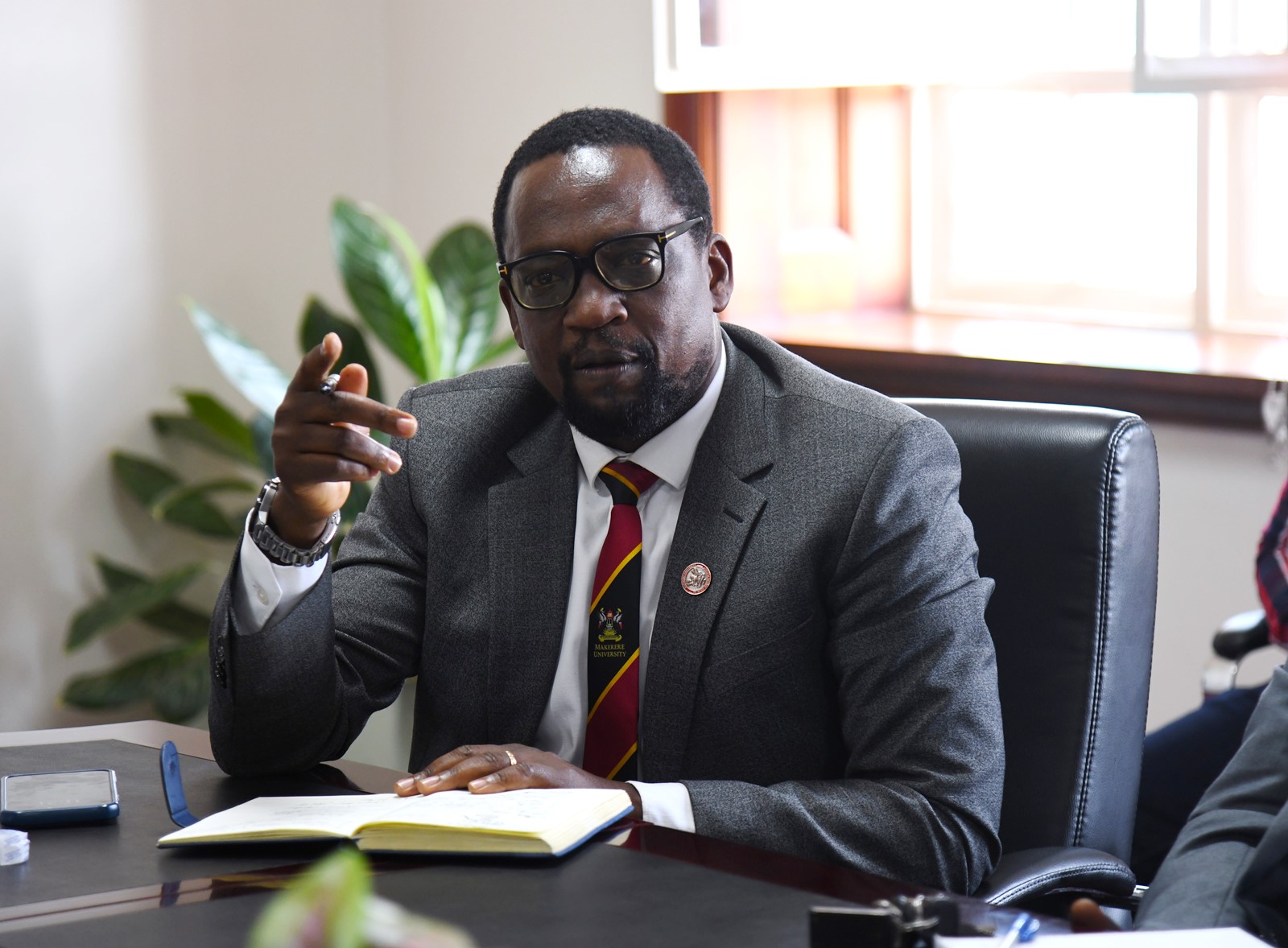
Prof. Kirenga also noted the College’s ongoing assessments of facility needs, including dialysis, ICU expansion, and equipment placement, stressing that the ultimate goal is a unified, well-structured health network across the University. He welcomed the Vice Chancellor’s support for transforming existing facilities into a teaching hospital and pledged to refine proposals that reflect both current realities and long-term institutional needs.
Committee Chair Reflects on Three-Year Achievements
Dr. Allen Kabagyenyi, Chair of Mak-HUC, reflected on the three-year journey with gratitude and pride, noting that the committee not only fulfilled its terms of reference but exceeded expectations. She highlighted major gains made under the Vice Chancellor’s support, including transforming the University Hospital into a self-accounting unit—an intervention that unlocked smoother financial management and accelerated service delivery. Dr. Kabagyenyi commended the strong collaboration with the Hospital administration, Human Resources Directorate, and other units, which ensured staffing stability even during institutional transitions.

She pointed to the expansion of referral partnerships—now totaling 29 health facilities nationwide—as a crucial achievement that guarantees continuity of care for staff and students wherever they are. She also emphasized the committee’s work in guiding policies for specialized treatment and cross-border care, strengthening fraud-prevention systems, and advancing digital transformation through an integrated health information system and the new Makerere University Health Services (MakHS) website. Dr. Kabagyenyi noted that these improvements have directly benefited staff and enhanced the overall quality of care, supported by close collaboration with the College of Health Sciences and access to some of the country’s best consultants. She concluded by underscoring the ongoing need for a comprehensive University Health Policy and expressed deep appreciation to the Vice Chancellor and University Management for their unwavering openness and support—attributes she credited for the committee’s success.
Highlights of Service Growth and Infrastructure Upgrades
The Chief, Makerere University Health Services, Prof. Josaphat Byamugisha, highlighted the significant progress achieved under the Health User Committee’s oversight, noting especially the steady rise in service utilization and renewed confidence among staff and students. He emphasized that trust in the University Hospital has grown organically—built not through advertising, but through improved patient experience, stronger systems, and word of mouth.

Prof. Byamugisha pointed to major achievements such as expanded Out-Patient Department (OPD) attendance, better student access to care, enhanced infrastructure including modernized theatres capable of complex procedures, and upgraded laboratories supported through framework agreements that ensure continuous equipment renewal. He noted that specialized clinics, increased inpatient capacity, and expanded referral networks have strengthened the Hospital’s reach and responsiveness. The Hospital is also taking on more research work and clinical training, partnering with units such as optometry, internal medicine, and the Clinical Trials Unit, with new collaborations—like the MasterCard Foundation—driving further growth.
He reaffirmed that the long-term vision of establishing a fully-fledged Makerere University Teaching Hospital is taking shape through coordinated efforts with the College of Health Sciences. Prof. Byamugisha credited the Vice Chancellor’s support for enabling these strides and expressed deep appreciation to all stakeholders contributing to the continued improvement of health services for the entire University community.
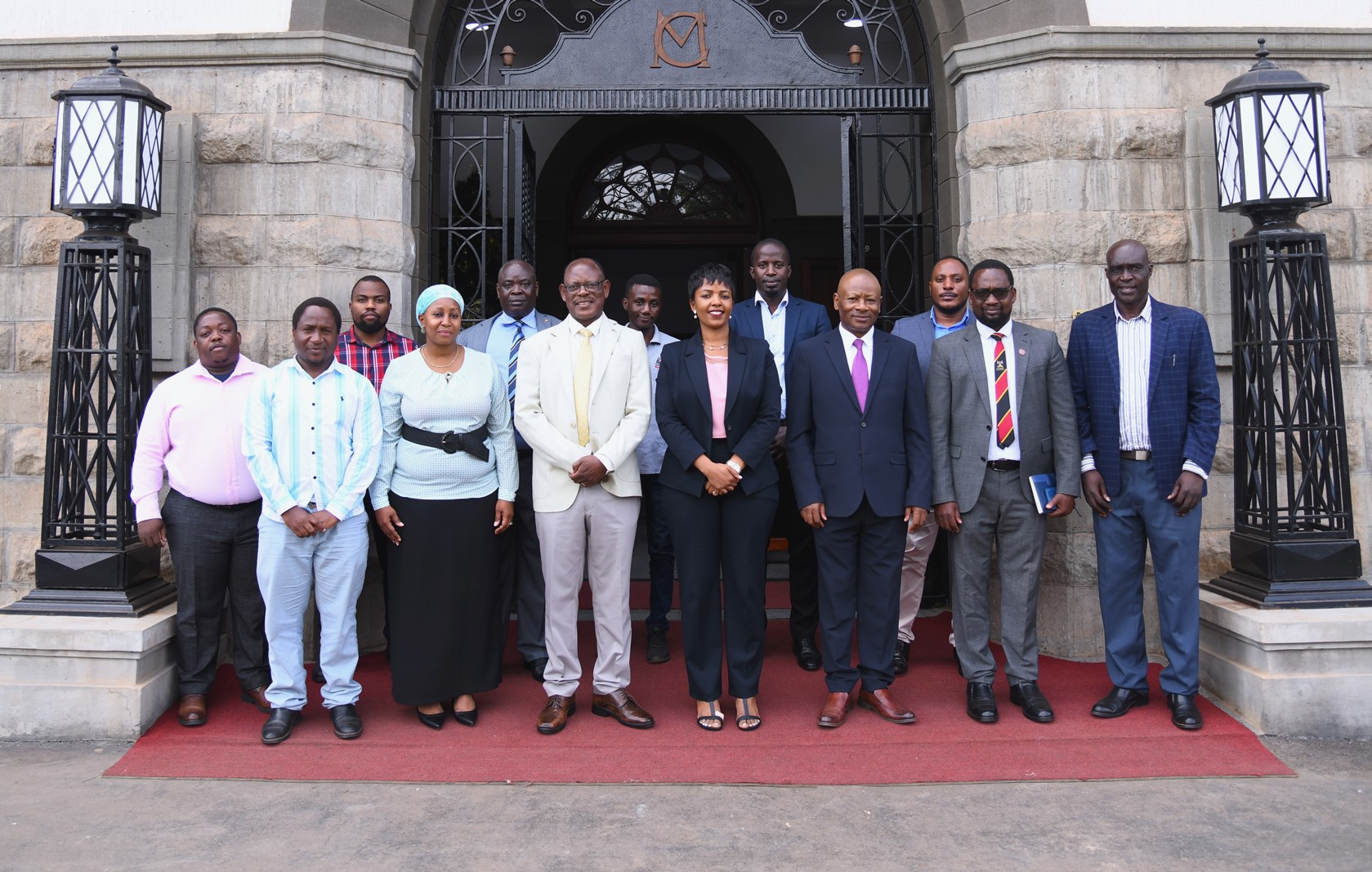
DICTS Unveils Modular Information System & Health Services Website
The Directorate for ICT Support (DICTS) presented the newly developed Makerere University Integrated Health Management Information System (MakIHMIS), designed around a modular system that streamlines all hospital processes. The platform integrates eight functional modules, including registration, triage, clinician workflows, inventory and medicines management, pharmacy dispensing, laboratory information management, user management, and linkages to both the Academic and Human Resource Management Information Systems ACMIS and e-HRMS respetively. Most of these modules are already active, enabling smooth patient registration, accurate record-keeping, real-time inventory tracking, and seamless access to student and staff data without duplication. Only two modules—land and insurance—remain under development before the system becomes fully end-to-end. The MakHS website on the other hand features information about hospital services, events, research activities, and staff profiles, offering both the university community and the public a centralized and efficient digital gateway to the hospital’s operations.
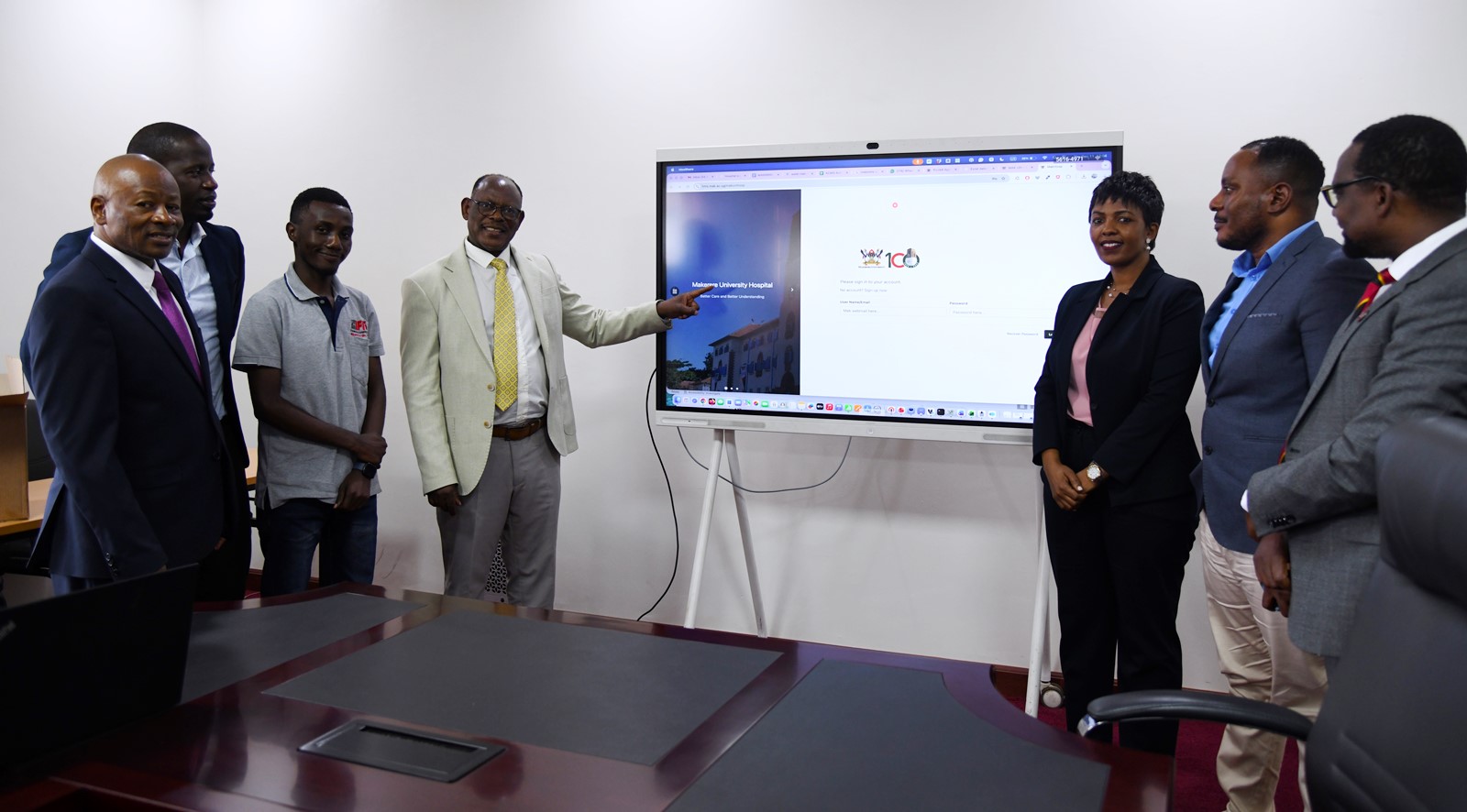
The term of the outgoing committee has officially concluded, and preparations are now underway for the incoming committee to assume its duties and continue advancing the work ahead.
Trending
-

 Research1 week ago
Research1 week agoMakerere University Launches Knowledge-Sharing Platform to Drive Innovation and Economic Growth
-

 General1 week ago
General1 week agoMakerere University Leaders Call for Excellence in Research and Supervision as Academic Staff and PhD Students Receive Certificates
-

 Humanities & Social Sciences2 weeks ago
Humanities & Social Sciences2 weeks agoCollege of Humanities and Social Sciences Launches Five Groundbreaking Publications
-

 Health1 week ago
Health1 week agoMakerere University Explores Strategic Partnership with Tsinghua University in Safety Science, Disaster Resilience and Public Health
-

 General2 weeks ago
General2 weeks agoFrom Knowledge to Impact: Empowering Youth Leaders and Young Women with Transformative Leadership Skills
